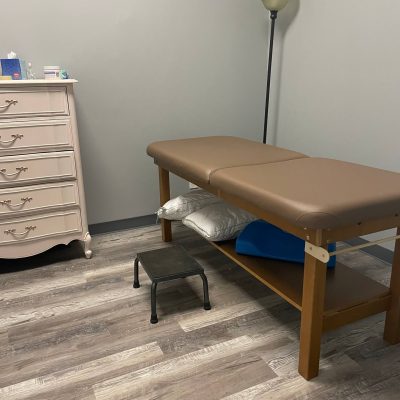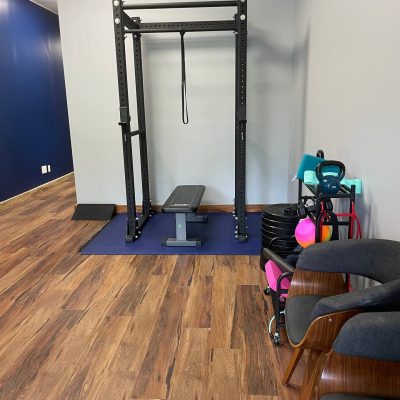Pelvic pressure postpartum can have various causes, ranging from normal postpartum changes to more serious complications. Here are some possible causes:
- Uterine involution: After childbirth, the uterus undergoes a process called involution, where it gradually returns to its pre-pregnancy size. This process can cause sensations of pressure in the pelvic area as the uterus contracts and shrinks.
- Perineal trauma: Tears or episiotomies during childbirth can cause discomfort and pressure in the pelvic area as they heal. This discomfort is typically temporary and improves as the tissues heal.
- Prolapse: Pelvic organ prolapse can occur when the muscles and ligaments that support the pelvic organs weaken, causing one or more of the organs (such as the uterus, bladder, or rectum) to drop down into the vagina. This can lead to sensations of pressure or fullness in the pelvic region.This can last well past the immediate postpartum period and is best treated by a Pelvic Floor Physical or Occupational Therapist.
- Hemorrhoids: Hemorrhoids, swollen veins in the rectal area, are common during pregnancy and can persist or worsen postpartum. They can cause discomfort, pain, and a feeling of pressure in the pelvic area.
- Constipation: Constipation is common after childbirth, particularly if you had a cesarean section or are taking pain medication. Straining during bowel movements can increase pelvic pressure and chronic straining can lead to prolapse.
- Engorgement: Breast engorgement, which occurs when the breasts become overfilled with milk, can cause discomfort and a feeling of fullness in the pelvic area, especially if lying down.
- Infection: Infections such as urinary tract infections (UTIs) or pelvic infections can cause pelvic discomfort or pressure. Symptoms may include pain or burning during urination, increased frequency of urination, fever, or abnormal vaginal discharge.
- Retained placental fragments: In some cases, fragments of the placenta or membranes may remain in the uterus after childbirth, leading to pelvic discomfort or pressure. This can sometimes be accompanied by abnormal bleeding or discharge.
- Muscle strain: The muscles in the pelvic area may experience strain during childbirth, especially if the delivery was prolonged or if forceps or vacuum extraction were used. This can cause temporary pelvic discomfort or pressure.
Pelvic floor therapy can be highly effective in addressing pelvic pressure postpartum. Here’s how pelvic floor therapy can help:
- Assessment: A pelvic floor physical or occupational therapist will conduct a thorough assessment to evaluate the strength, flexibility, and coordination of your pelvic floor muscles. They will also assess any other contributing factors such as posture, muscle imbalances, or scar tissue from childbirth.
- Pelvic floor exercises: Pelvic floor therapy typically includes exercises to strengthen and improve the function of the pelvic floor muscles. This may include pelvic floor contraction and relaxation techniques to help release tension in the pelvic floor muscles.
- Education: Pelvic floor therapists educate patients about pelvic anatomy, proper toileting techniques, and strategies to optimize pelvic floor function. They may also provide guidance on posture, body mechanics, and breathing techniques to support pelvic floor health.
- Manual therapy: Hands-on techniques such as soft tissue massage, myofascial release, and trigger point therapy may be used to address muscle tension, scar tissue, or other sources of pelvic discomfort.
- Biofeedback: Biofeedback techniques can help you learn to better control and coordinate your pelvic floor muscles by providing real-time feedback about muscle activity.
- Behavioral modifications: Pelvic floor therapists may recommend lifestyle modifications to reduce pelvic pressure, such as avoiding heavy lifting, improving bowel habits, and managing constipation.
- Progressive exercises: As you progress in your pelvic floor therapy program, your therapist may introduce more challenging exercises to further strengthen and stabilize the pelvic floor muscles.
- Collaborative care: Pelvic floor therapists often work closely with other healthcare providers, such as obstetricians/gynecologists, urologists, and colorectal specialists, to ensure comprehensive care and address any underlying medical conditions contributing to pelvic pressure.
It’s important to seek guidance from a qualified pelvic floor therapist who can tailor a treatment plan to your specific needs and goals. With consistent effort and guidance, pelvic floor therapy can help alleviate pelvic pressure postpartum and improve overall pelvic floor function and comfort.







